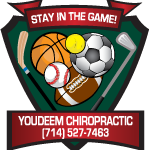Our Blog
Bacteria in Your Gut? Rheumatoid arthritis, an autoimmune disease that attacks joint tissue and causes pain, affects 1.3 million Americans. Researchers have linked a species of intestinal bacteria known as Prevotella copri to the onset of rheumatoid arthritis. Of those tested, 75% of stool samples from patients newly diagnosed with rheumatoid arthritis carried Prevotella copri…
Read MoreKids and Moms. A mother’s friendships with other adults can impact their adolescent children’s relationships with their own friends, particularly the negative aspects of these relationships such as conflict and antagonism. Adolescents may mimic the negative characteristics of their mothers’ relationships in their own peer-to-peer friendships. Mothers who display high levels of conflict with friends…
Read MoreKids Need Regular Bedtimes. A study of 10,000 children in the United Kingdom found that children with inconsistent bedtimes are more likely to suffer from behavioral and emotional problems than their peers who go to sleep at the same time every night. The good news is that the effects are reversible once children settle into…
Read MoreLack of Motion and the Heart and the Lungs. The negative effects of immobilization (lack of proper motion) begin as soon as four hours after injury! The direct effects of deconditioning on the cardiopulmonary system (heart & lungs) include an increase of the maximal heart rate and a decrease in your maximal oxygen consumption potential.…
Read MoreBetter Math, English, and Science Grades! Research on British school children has found a link between academic performance and daily exercise. English, math, and science scores went up as the number of minutes per day of exercise increased with the greatest gains in female science scores. With boys and girls only exercising 18-29 minutes per…
Read MoreMore Reasons to Eat Broccoli and Cauliflower! Sulforaphane (found in cruciferous vegetables including broccoli, cabbage, cauliflower, kale, and collards) may help reduce the risk of respiratory inflammation that leads to chronic diseases such as asthma and chronic obstructive pulmonary disease. In a study setting, researchers found that those who consumed 200 grams of broccoli had…
Read MoreDeath in Boom Times. Historically, when economies expand, death rates increase for both middle-aged and older people; however, when economies head for recession, the death rates among these groups decrease. For every 1% point increase in GDP, death rates appear to rise by 0.36% among older people, and by 0.38% among the middle-aged. Two popular…
Read MoreEinstein’s Brain. The left and right hemispheres of Albert Einstein’s brain were unusually well connected to one another, which may have contributed to his brilliance. This study is the first to detail Einstein’s corpus callosum, the brain’s largest bundle of fibers that connects the two cerebral hemispheres and facilitates interhemispheric communication. Brain, October 2013
Read More5 Meals a Day? A regular five meal pattern – breakfast, lunch, dinner and two snacks a day – was associated with a reduced risk of being overweight or obese. Skipping breakfast was associated with a greater BMI and waist circumference. PLoS One, October 2013
Read MoreOsteoarthritis of the Hip. 118 patients with diagnosed unilateral hip osteoarthritis received either patient education (PE) with or without manual therapy (MT, performed by a chiropractor), or a minimum control intervention (MCI) consisting of an at-home stretching program. The study found that the combination of patient education and manual therapy to be the most effective…
Read More
